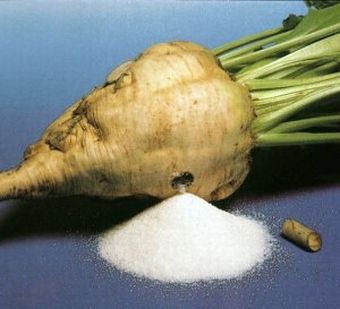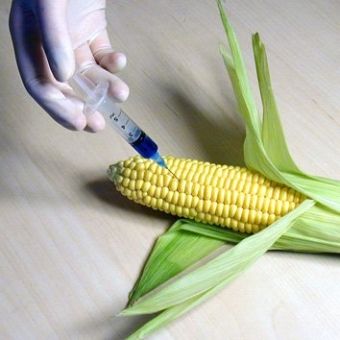Mar-05-2010 03:59printcomments
Judge in California Could Halt Planting of Genetically Modified Sugar Beets
Tim King Salem-News.com

Case in front of San Francisco federal judge could change future of 'mad scientist' food products on our dinner plates. Sugar beets
(SAN FRANCISCO) - A case involving genetically modified (GM) food will be in front of a federal judge Friday in San Francisco.
Researchers say the future of generations of Americans hangs in the balance, as the judge could order a halt to the planting or harvesting of any GM “Roundup Ready” sugar beets in the U.S.
This would strike a blow to growers in the Red River Valley, where more sugar beets are grown than any other region. Most of these growers have already been using Roundup Ready seed varieties for two years.
Scientists say that is no type of positive proof. GM foods are put through a complicated unnatural process. Our reporter April Scott took this on just a few days ago in her article, While We Were Sleeping... GM Food and the Brink of No Return[1]
"The process behind genetically modified food involves a careful re-configuration of genes combining e-coli bacteria, soil bacteria and the cauliflower mosaic virus that causes tumors in plants. They add an antibiotic and then artificially force it into plant cells with a gene invasion technique. All this is so farmers can douse nearly unlimited amounts of Roundup Herbicide on the crops and the plants won’t die."
-Professor Robert Kremer
The Organic & Non-GMO Report published an article in January, stating that
scientists are finding many negative impacts of Roundup Ready GM crops.They say the
USDA doesn’t want to publicize studies showing negative impacts.They spoke to Robert Kremer, a microbiologist with the US Department of Agriculture’s Agricultural Research Service and an adjunct professor in the Division of Plant Sciences at the University of Missouri.
He is co-author of one of five papers published in the October 2009 issue of The European Journal of Agronomy that found negative impacts of Roundup herbicide, which is used extensively with Roundup Ready genetically modified crops.
Kremer has been studying the impacts of glyphosate, the primary ingredient in Monsanto’s Roundup herbicide, since 1997.
The Organic & Non-GMO Report interviewed Mr. Kremer about his research and the reluctance of the USDA to publicize the findings of the five papers.

Please give me an overview of your research
RK: We started in 1997 wanting to see if this new system, Roundup Ready, would change the production of nematodes in soybean. We started looking at organisms in soybean roots and saw microorganisms colonizing the roots. We suspected that glyphosate was having an impact. There was a root fungi problem that seemed to be encouraging sudden death syndrome (SDS).
We saw the increase of these fungi in the Roundup Ready (genetically modified) system, both soybeans and corn.
What types of things are you seeing in the Roundup Ready system?
RK: This system is altering the whole soil biology. We are seeing differences in bacteria in plant roots and changes in nutrient availability. Glyphosate is very systemic in the plant and is being released through the roots into the soil. Many studies show that glyphosate can have toxic effects on microorganisms and can stimulate them to germinate spores and colonize root systems. Other researchers are showing that glyphosate can immobilize manganese, an essential plant micronutrient.
What are glyphosate’s impacts on beneficial soil bacteria?
RK: The most obvious impact is on rhizobia, a bacterium that fixes nitrogen. It has been shown that glyphosate can be toxic to rhizobia. (Nitrogen fixing bacteria are important to soils because nitrogen is the most commonly deficient nutrient in many soils.)
What about research showing increased incidence of Fusarium in Roundup Ready GM crops?
RK: We’ve taken field surveys and seen an increase in Fusarium with the use of glyphosate. Some Roundup Ready varieties even without using glyphosate tend to be more susceptible to being impacted by Fusarium. It could be an unintended consequence of genetic manipulation that could make it more susceptible.
Your paper also mentioned the potential of glyphosate to contaminate groundwater.
RK: Yes, under certain circumstances. The big assumption for claims that glyphosate is benign is that it isn’t immediately absorbed by the soil. But research is showing that isn’t necessarily true; that it is still available in the soil.
If soil is full of phosphorous, glyphosate could leach into ground water. For example, farmers may use manure from confined animal feeding operations as a fertilizer. The soil will then contain high amounts of phosphorus, which overwhelms the soil. Any glyphosate that hits the soil will be a potential contaminant. It can stay in the soil or it might run off into streams or waterways.
What about glyphosate resistant weeds?
RK: We have eight different species of glyphosate resistant weeds in Missouri. Some species of Johnson Grass are found in fields where Roundup is used year after year. It is a very aggressive weed.
To solve the problem of weed resistance, genetic engineers are developing soybeans that tolerate Roundup and Dicamba, another herbicide. They are incorporating another gene resistant to another herbicide. When resistance happens again, will they then develop a plant resistant to five or six herbicides? It’s an illogical circle.
With so much glyphosate being used, what types of long-term impacts do you think could occur?
RK: We are already seeing glyphosate-resistant weeds. If we continue to use glyphosate in the same fields year after year, it’s a matter of time until microbial communities in the soil will shift to more detrimental species.
The use of glyphosate stimulates detrimental pathogens in the growing season but they go back down after the growing season. Eventually, they may build up in the soil and not go back down.
Are many researchers looking at the possibly negative impacts of glyphosate or Roundup Ready crops?
RK: There are a handful of researchers. There is more research looking at the production of these crops.
The papers published in the European Journal of Agronomy received no publicity in the United States. Why is that?
RK: I was working with USDA-ARS to publish a news release about these studies. I’ve gone all the way to the administrators, but they are reluctant to put something out. Their thinking is that if farmers are using this (Roundup Ready) technology, USDA doesn’t want negative information being released about it. This is how it is. I think the news release is still sitting on someone’s desk.
What about your future research?
RK: We’re looking at some methods that could be used to overcome negative effects if we continue to use Roundup Ready crops, such as supplementation of nutrients by foliar application. I’m more interested in sustainable agriculture. More farmers are interested in using cover cropping to maintain soil quality and other organic amendments. But it’s a steep learning curve for them.
Monsanto
One of the primary proponents behind GM food is the Monsanto group, they brought Americans and Vietnamese the memorable cancer causing Agent Orange, a defoliant sprayed over the jungles during the Vietnam War. It has caused terrible birth defects and abnormalities in the children of those exposed to it.
Our writers Chuck Palazzo and John Paul Rossie, both report about the issues facing human beings as a result of the extensive military use of Agent Orange.
No Vietnam Veterans will tell you Monsanto is a good company[3].
The research says they are doing it to us again with GM foods,
and roping the farmers into using these controversial methods because there is more profit involved, with
no regard for what ingesting these things really does or will mean to the human body, already overwhelmed by so many preservatives and questionable ingredients[4].
The judge’s decision could affect many in agriculture. Besides the growers and other share owners, thousands of people work in the plants and drive beet-hauling trucks, an article in the Grand Fork Herald explains[2].
So lawyers from the group American Crystal will be on hand to do everything they can to persuade the judge not to put forth the order halting the planting of the controversial products.
It seems a tall order to believe that something controversial and fairly new could have such an impact, they have always grown sugar beets, but they never profited the way they do now.
The company's lawyers will use the fact that many people could potentially lose their jobs as a bargaining chip, along with "we have already been doing this for two years" as if that is any kind of proof.
Proof of profit perhaps, by tricking nature, in a nation that freaks out over stem cell research to save human lives, but allows the corporate sector to go mad and bring these potentially dangerous products to our dinner tables.And they are trying all over the world to get governments and companies to buy in. It is a travesty and
sooner or later somebody is going to put their foot down over these reckless attempts to push profits by selling products that are not fully tested or evaluated.Good decisions have emerged from the San Francisco Federal Court in the past, we will see what happens.
http://www.salem-news.com/articles/march052010/roundup-judge.php
 Genetically modified food
Genetically modified food 



